Dog Grooming
10 Must-Have Dog Grooming Essentials That Will Keep Your Pet Looking Great
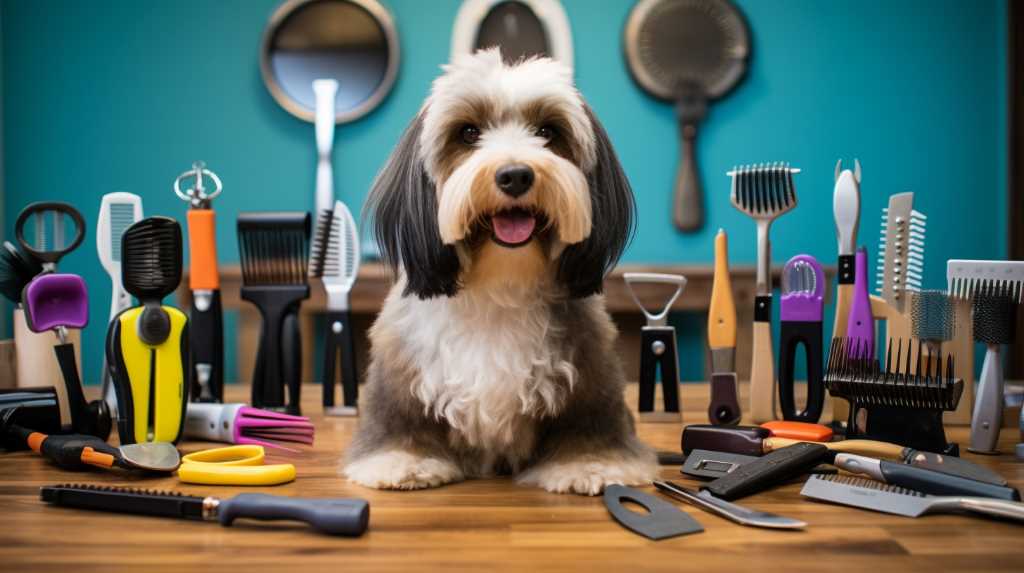

You wouldn’t step out without your grooming essentials, would you?
Neither should your furry friend. Maintaining your dog’s hygiene isn’t just about looking good, it’s key to their health too.
From the right brush to the proper tooth care, we’ve got you covered.
So, let’s dive into these 10 must-have dog grooming essentials that’ll keep your pet looking great and feeling even better.
After all, they’re worth it, aren’t they?
Understanding the Importance of Regular Dog Grooming
You’ll soon realize that regular grooming isn’t just about keeping your dog looking good, it’s crucial for their overall health and happiness. The grooming benefits extend beyond just aesthetics. They include spotting potential health issues, such as skin infections or abnormal growths, early on. Regular grooming also helps keep your dog’s coat and skin healthy by removing dead hair and distributing natural oils.
Your grooming frequency should depend on your dog’s breed, hair type, and lifestyle. For some, a monthly grooming session will suffice, but others may require weekly care. Remember, the more you groom, the more comfortable your dog will become with the process.
In the end, you’re not just serving your dog’s needs, you’re also contributing to their long-term wellbeing.
Essential Grooming Tool: The Right Brush for Your Dog’s Coat
Choosing the right brush for your dog’s coat isn’t just about keeping them looking good, it’s also crucial to their skin health.
You’ve got to consider the brush type, brushing techniques, and how to maintain your dog’s coat health.
Let’s dive into these points and make sure you’re equipped with the knowledge to pick the perfect brush.
Brush Type Selection
Depending on your dog’s coat type, you’ll need to select the right kind of brush to keep them looking their best. Brush storage is also essential in maintaining the effectiveness of the brush. It’s advisable to store brushes in a dry, clean area to avoid bacterial build-up that can harm your dog’s skin.
When it comes to fur types, dogs with short, smooth coats will benefit from a bristle brush, which will remove loose hair and distribute oils for a shiny coat. On the other hand, a slicker brush is perfect for long-haired breeds, as it detangles and removes matting.
For dogs with thick undercoats, like Huskies, a rake brush or deshedding tool is ideal. Remember, the correct brush not only improves appearance but also promotes skin health.
Brushing Techniques
It’s important to know the right brushing techniques to ensure the health and shine of your furry friend’s coat. Detangling methods are vital, as tangled fur can cause discomfort and even lead to skin infections. Always start at the ends of the hair and work your way up to the root to avoid pulling and causing pain. If you encounter a stubborn knot, don’t force it. Use a detangling spray or a specialized comb.
Brushing frequency also plays a significant role. Most dogs benefit from daily brushing, but the frequency can vary depending on your dog’s breed and coat type. Regular brushing not only keeps their coat looking great, but also stimulates blood flow to the skin, promoting healthier hair growth.
Up next, we’ll explore more about coat health maintenance.


Coat Health Maintenance
You’re on the right track to ensuring a healthy coat for your furry friend by focusing on regular care and maintenance. Digging deeper, the dietary impact on your pet’s coat health is significant. What they eat fuels their body and influences their fur quality. A balanced diet, rich in essential fatty acids, promotes a shiny and strong coat.
Next, consider seasonal changes. Winter can be harsh on your pet’s coat, leading to dryness and brittleness. You’ll need to step up hydration and might want to invest in a quality conditioner.
Summer, on the other hand, requires protection against sun damage. A good pet-friendly sunscreen can do the trick. Remember, your pet’s coat is a reflection of their overall health.
Importance of a Good Quality Dog Shampoo
Just as you’ve discovered the perfect brush for your dog’s coat, it’s equally important to find a high-quality shampoo.
You shouldn’t underestimate the impact that a good shampoo can have on your pet’s health and appearance.
It’s not just about cleanliness, but also about maintaining their skin’s natural oils and protecting their coat.
Shampoo Selection Criteria
When you’re shopping for dog shampoo, you’ve got to consider your pet’s skin type, fur type, and specific needs like tick and flea control.
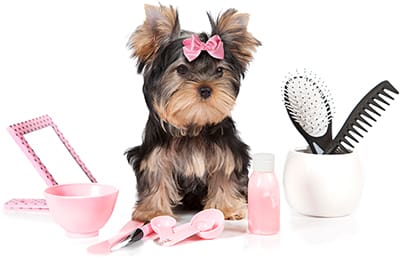

It’s not uncommon for dogs to develop shampoo allergies. If your pet is frequently itching or has a rash after bath time, they may be allergic to certain ingredients in their shampoo.
To counter this, consider organic options. These are typically free from harsh chemicals and artificial fragrances that can irritate your dog’s skin. Organic dog shampoos often contain natural ingredients like aloe vera and oatmeal that soothe and nourish the skin.
Benefits of Quality Shampoo
Investing in a quality shampoo can significantly improve your pup’s coat health and overall comfort. Don’t underestimate the power of a good scrub with the right products! It’s crucial to consider shampoo allergies, especially if your furry friend has sensitive skin. The wrong shampoo can cause itching, redness, and discomfort.
Here’s where organic alternatives come in handy. These products are free from harsh chemicals, reducing the likelihood of allergic reactions. Plus, they’re often enriched with essential oils and natural extracts, promoting a shiny, healthy coat. You’re not just serving your pet, but also the environment. While they may cost a little more, the benefits are worth every penny.
The Role of Conditioners in Dog Grooming
You’ll find that using a conditioner in your dog’s grooming routine can significantly improve the texture and shine of their coat. The conditioner benefits are numerous, not just aesthetically, but also for your dog’s overall skin health. Regular use of a conditioner can help to reduce shedding, minimize hair breakage, and promote a healthier, more resilient coat.
If your dog has sensitive skin, consider hypoallergenic options. These are specially formulated to be gentle on the skin, reducing the risk of irritation and allergic reactions.
Nail Care: Clippers and Grinders for Your Dog
Now, let’s turn our attention to an often overlooked aspect of dog grooming – nail care.
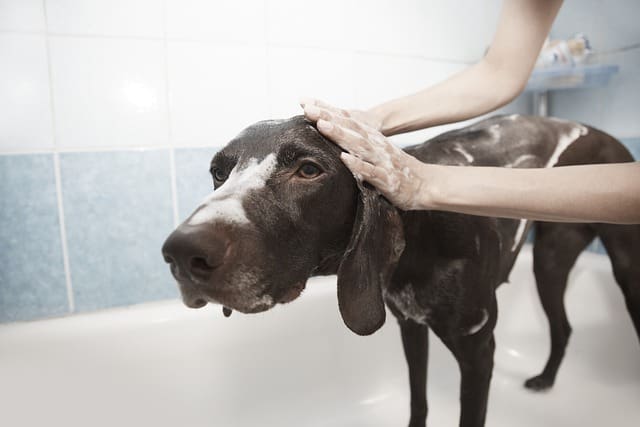

Selecting the right clippers and knowing how to use a nail grinder are key to keeping your pup’s paws healthy.
Don’t neglect this part; a proper nail care routine is essential for your dog’s overall well-being.
Choosing Right Clippers
When it comes to keeping your dog’s coat neat and tidy, it’s important to choose the right clippers. You should consider factors like clipper functionality and clipper durability.
-
Clipper Functionality: Look for clippers that offer various speed settings and blade options. This allows you to customize your grooming routine according to your dog’s coat type and your personal preference.
-
Clipper Durability: Opt for clippers that are built to last. High-quality materials and robust construction ensure the product will endure regular use.
-
Comfort: The clipper should feel comfortable in your hand, which makes for a smoother grooming process.
-
Noise Level: Clippers with low noise levels are optimal as loud noises can scare some dogs.

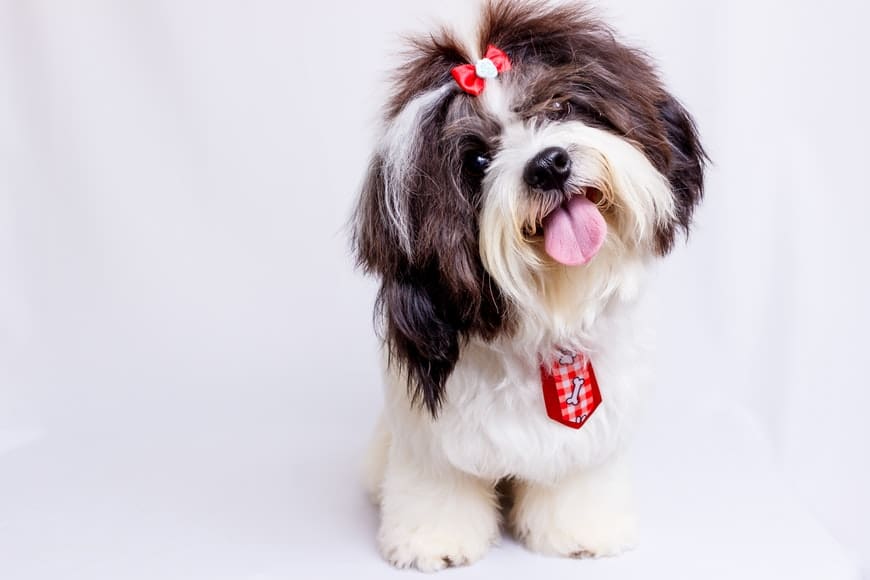
As we move on, let’s consider another integral part of your dog’s grooming kit – the nail grinder.
Nail Grinder Use
In addition to clippers, it’s crucial to also include a nail grinder in your canine care toolkit. This tool is particularly beneficial for maintaining your dog’s nail health, but it’s important to follow grinder safety precautions. These include not grinding too close to the quick, giving your dog regular breaks, and always keeping the grinder moving to avoid creating hot spots.
Managing noise aversion is another key aspect of successful nail grinding. If your dog is fearful of the noise, try gradually introducing the grinder, perhaps during a calm, enjoyable time such as mealtime. Consistent, patient conditioning can help your pup become more comfortable with the grinder’s noise.
Maintaining Healthy Nails
Now that you’re familiar with using a nail grinder, let’s move on to maintaining healthy nails. This is an essential aspect of your dog’s overall wellness, and it involves more than just regular trimming. To ensure your pet’s nails stay healthy, follow these guidelines:
-
Nail Trimming Frequency: Don’t wait for nails to overgrow. A good rule is to trim every 3-4 weeks, but tailor this to your dog’s needs.
-
Nail Infection Prevention: Regularly check for signs of infection, like swelling or discoloration. Early detection is key.
-
Balanced Diet: Proper nutrition can strengthen your dog’s nails, preventing breakage.


-
Regular Vet Check-ups: Your vet can spot issues early and provide expert advice on nail care.
The Magic of Dog Hair Clippers and Scissors
You’ll be amazed at the difference dog hair clippers and scissors can make in keeping your pet’s coat neat and tidy. Clipper varieties are vast, from cordless, lightweight models to heavy-duty, professional-grade tools. Choose a clipper that’s appropriate for your dog’s coat type. Long-haired breeds may require more powerful clippers, while a simple trimmer could suffice for short-haired dogs.
Scissor safety is key to a stress-free grooming session. Always point the scissors away from your dog’s skin and use a comb as a guard between the scissors and skin. Opt for scissors with rounded tips for added safety.
Now, you’re a step closer to becoming a pro at dog grooming. Next, let’s turn our attention to dental care essentials for your dog.
Dental Care Essentials for Your Dog
Brushing your pup’s teeth regularly shouldn’t be overlooked as it’s a vital part of their overall health. It’s not just about preventing bad breath; it’s a powerful weapon against oral diseases.
Consider these four key essentials for maintaining your dog’s dental health:
-
Toothbrush and Toothpaste: Choose a dog-friendly toothpaste and a suitable brush to effectively clean their teeth.

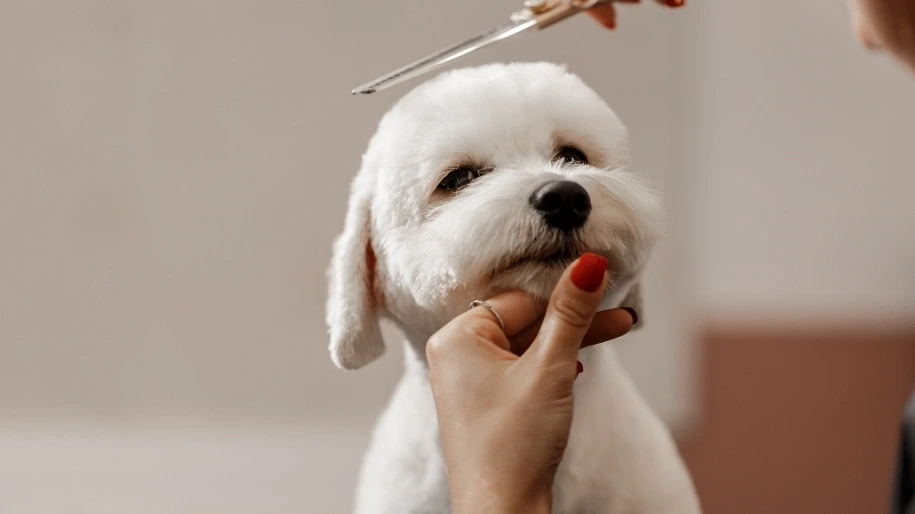
-
Dental Chews and Chew Toys Importance: These not only satisfy your pup’s natural urge to chew but also promote dental health by cleaning their teeth.
-
Diet: A well-balanced diet can help maintain your dog’s dental health.
-
Professional Check-ups: Regular vet visits ensure early detection and treatment of potential dental issues.
These bad breath solutions and preventative measures are key to your dog’s dental care routine.
Next, we’ll delve into dog ear cleaning essentials.
Dog Ear Cleaning Essentials
Just like your pup’s teeth, their ears also need regular maintenance to prevent infections and other health issues. Ear infections prevention isn’t just about cleanliness; it’s also about being attentive to any changes in your dog’s behavior. If they’re scratching their ears more frequently or shaking their head, it might be time to check their ears.
You can use natural cleaning solutions, such as a mixture of white vinegar and water, to clean your dog’s ears. However, avoid using cotton swabs as they can push debris further into the ear canal. Remember, a gentle touch is necessary when cleaning your dog’s ears.
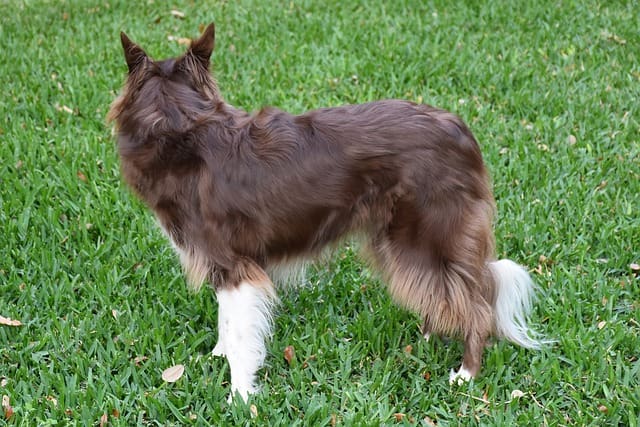

Now that we’ve covered ear care essentials, let’s move onto other useful grooming accessories: towels, wipes, and gloves.
Useful Grooming Accessories: Towels, Wipes, and Gloves
In addition to ear care, towels, wipes, and gloves are other accessories that should be part of your pet care routine. These items, often overlooked, can significantly enhance your pet’s grooming experience. It’s essential to select products wisely, considering factors like quality and suitability for your pet’s needs.
Here are some points to consider:
-
Wipe brand comparison: Not all brands are created equal. Some have a higher moisture content, which helps in easier cleaning, while others may contain skin-soothing ingredients.
-
Towel material benefits: Microfiber towels, for instance, are excellent for quick drying and trapping loose fur.
-
Glove type: Rubber gloves can provide a gentle massage while cleaning, benefiting your pet’s circulation.
-
Sustainability: Opt for biodegradable wipes and reusable towels to minimize environmental impact.

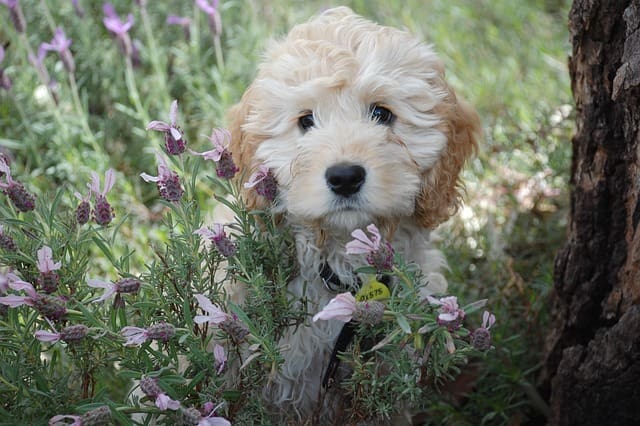
Maintaining Your Dog Grooming Tools: Cleaning and Replacement Tips
You’ll find that maintaining your grooming tools, including proper cleaning and timely replacement, can significantly improve their effectiveness and longevity. Regular cleaning prevents bacteria buildup, which can lead to skin irritation in your furry friend. It’s crucial to use appropriate drying methods after cleaning to avoid rusting. Air-drying is usually sufficient, but for some tools, a quick wipe with a dry cloth can speed up the process.
Tool storage is equally critical; a clean, dry place will prolong your tools’ lifespan. Consider a dedicated storage box or bag to keep everything organized and protected. Regularly inspect tools for wear and tear. Replace those that are worn out or damaged.
Frequently Asked Questions
What Are Some Recommended Brands for Dog Grooming Tools?
When comparing grooming tool costs, you’ll find FURminator, Andis, and Wahl to be top-rated brands. They’ve got innovative pet grooming inventions that’ll keep your pooch looking sharp without breaking the bank.
Are There Any Specific Dietary Supplements That Can Improve My Dog’s Coat Health?
Yes, coat boosting foods like Omega-3 fatty acids can improve your dog’s coat health. However, remember, dietary supplements may have side effects. Always consult your vet before making any dietary changes.
How Often Should Professional Grooming Be Done in Addition to At-Home Grooming?
Ironically, your dog doesn’t need a spa day every week. Grooming frequency impacts their coat health. Typically, professional grooming should be done every 4-6 weeks, considering breed specific needs and at-home care.
Are There Any Specific Training Techniques to Help My Dog Become More Comfortable With Grooming Procedures?
Yes, you can use Grooming Anxiety Management and Reward Based Conditioning techniques. Gradually introduce grooming tools, rewarding calm behavior with treats. Ensure it’s a positive experience, not a source of fear or stress.
What Are Some Signs That My Dog’s Grooming Needs Are Not Being Adequately Met?
If your pup’s skin shows signs of infection or they’re exhibiting changes in grooming behavior, it’s likely you’re not meeting their grooming needs. Don’t overlook these signs; your pet’s comfort and health depend on it.
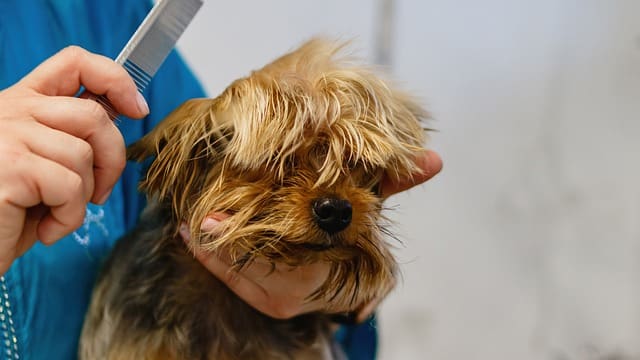

Conclusion
So, you’re now equipped with the top 10 dog grooming essentials. Remember, regular grooming isn’t just about aesthetics. A shocking 85% of dogs over the age of 4 suffer from some form of gum disease. Regular grooming habits, especially dental care, can help keep your furry friend healthy.
Stay diligent in maintaining and replacing your tools – it’ll pay off in the long run.
Here’s to a well-groomed, happier, healthier pooch!




Hello, My Dog-Loving Friends! I’m Jason Brown, a social media marketer for Dog Training Schools and a writer at BestDogTraining.com. My world is all about the joy and wisdom our four-legged friends bring. I love the exchange of learning with dogs; it’s not just my job. It’s my way of life.
My journey began at Ohio State with a degree in journalism, fueling my passion for storytelling. This passion comes alive in every post and article I write, whether about the latest dog training techniques or heartwarming canine tales.
When I’m not immersed in the world of dogs, you can find me surfing. There’s a thrilling similarity between the unpredictability of the ocean and working with animals – both are endlessly fascinating. I’m also an aspiring poet, although I embrace the more humorous side of my attempts at verse.
Traveling is another passion of mine. My wife, kids, and I explore new places, always accompanied by our Basset Hound, Snoopy. He’s more than a pet; he’s integral to our family adventures.
Through my work, hobbies, and travels, I’ve discovered that life’s most fulfilling experiences come from sharing moments with family, friends, and a loyal dog. Follow me for stories and tips from a life enriched by dogs, the ocean, and family adventures! 🐕🌊👨👩👧👦
Dog Grooming
Professional Dog Grooming Tips: How to Keep Your Pup Looking and Feeling Great
Dog grooming is an essential aspect of pet care. Every dog owner should have basic knowledge of it. While some may opt for professional grooming services, not everyone can afford it.
Therefore, professionals from around the country have shared their top dog grooming tips and tricks. With these expert tips, dog owners can learn how to groom their pets at home, saving both time and money.
From nail trimming to extensive coat grooming, these tips are designed to make the process easier and more effective.
12 Professional Dog Grooming Tips
Keeping your dog clean and well-groomed is essential to their overall health and happiness. Here are 12 professional dog grooming tips to help you achieve a clean and pretty coat for your furry friend.
Routine
Developing a routine that works for both you and your dog is crucial. Use the same shampoo, bathing spot, and steps every time to make it easier on you and less stressful for your dog.
Make sure to clean every part of their body, including the belly and face, and rinse thoroughly to avoid any shampoo residue left on the skin or in the coat.
Choose the Shampoo
There are a variety of canine shampoos available, and what you choose will be based on your needs.
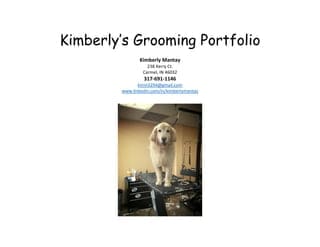

For example, for dry skin, try an oatmeal-based shampoo. Puppies need special shampoo that won’t make them tear up, so make it more comfortable with a tearless puppy shampoo. In general, oatmeal-based shampoos are usually the best basic option.
Additionally, conditioners can be used if your dog has dry or sensitive skin, and dry or brittle hair. It also can help reduce matting.
Deshedding/Dematting
Take a comb or brush and work through the coat as you’re rinsing to rid your dog of excess loose hair and to detangle any mats that they’ve developed. You’ll find it easier to do this during the bathing routine, rather than when you’re trying to dry them.
Grooming Equipment
One highly recommended professional dog grooming tip is not to skimp on the tools you’ll need (brushes, scissors, trimmers).
Not only will they last longer, but they will work better than their cheaper cousins. Make sure that you clean your equipment after every use and lubricate and sharpen as necessary to prolong the life of the tool.
Organize Your Equipment
Having everything in one place — shampoo, combs, brushes, scissors, trimmers, etc. — will keep the process moving along. There’s nothing like an anxious dog making its escape while you search for the right pair of scissors.
Get a Helping Hand
Many dogs will not sit still for drying and trimming, so you might need a little help.
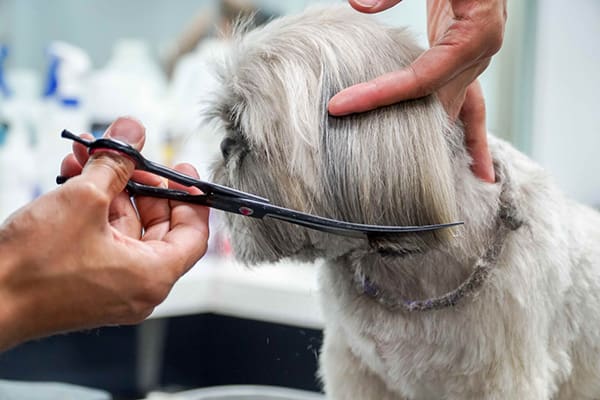

One dog-grooming trick is to use a Groomers Helper device to stabilize your dog and keep him from struggling, biting, or spinning. It will actually make your job go by all that much faster, a relief for the dog as well. If equipment isn’t in your budget, ask a family member or friend your pet is comfortable with to lend a helping hand.
Dry Before Grooming
Make sure that you thoroughly dry your dog before grooming. Partially dried coats will tend to curl more, making it difficult to get an even trim. This way you can do one pass with the clippers, rather than two.
Clippers 101
If you’ll be trimming your dog’s coat, you will need a pair of clippers and one or more blades.
Blades are numbered differently than human clipper blades, where 1 is the shortest. To keep your dog’s coat longer, use a #5/8, #3, or #4. For a shorter cut, go with #5, #7, #9, or #10.
Make sure that your blade is a finish-cut or FC version. The teeth are spaced a bit farther apart and the blades aren’t as sharp as a skip-tooth blade, which should be reserved for pro groomers. Also, for armpits, around eyes and in the sanitary area, use only a #10 blade.
Grooming Made Easy
Always go with the lay of the hair when trimming. Keep the tip of your blade down against the skin, holding the back at an angle. Then pull the skin taut as you move your trimmer along the coat (to avoid cutting the skin).
Trimming Paws
If you need to trim between the pads or around the edge of the paws, one of the simplest dog grooming tips is to move your dog to the edge of the work surface, so it makes it easier for you to get to.
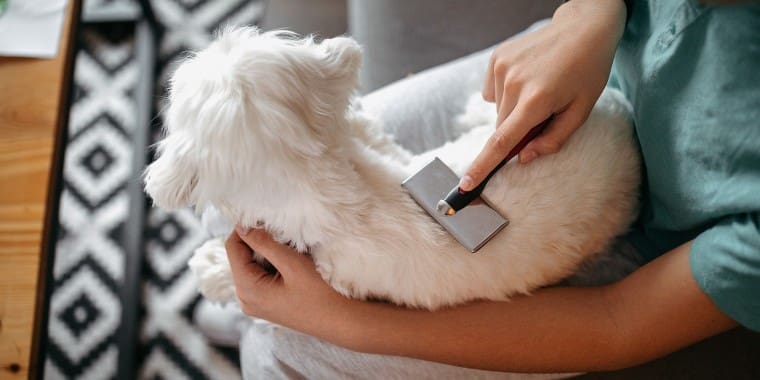

Right Tool for Trimming Nails
There are a variety of clippers available, from electric dremel-style tools to scissor and guillotine styles.
There is no need to invest in an electric dremel nail grinder. It is more expensive than the other styles and the noise can be off-putting to your dog, who probably isn’t fond of the procedure to begin with.
How to Trim the Nails
Start with the back paws, as they tend to be less sensitive. Hold the paw firmly in your hand. Cut the end off the nail, below the quick, at a 45-degree angle. You can choose to take several small cuts or one larger cut, but be very careful.
Frequently Asked Questions
What tools are essential for professional dog grooming?
Professional dog grooming requires a variety of tools to ensure that the dog is groomed properly. Some essential tools include:
-
Clippers: Clippers are used to trim the dog’s fur to the desired length. It’s important to use clippers that are designed for dogs and to choose the right blade for the dog’s coat type.
-
Scissors: Scissors are used to trim the dog’s fur in areas that are hard to reach with clippers, such as around the ears and paws.
-
Brushes and combs: Brushes and combs are used to remove tangles and mats from the dog’s fur. It’s important to choose the right brush for the dog’s coat type.

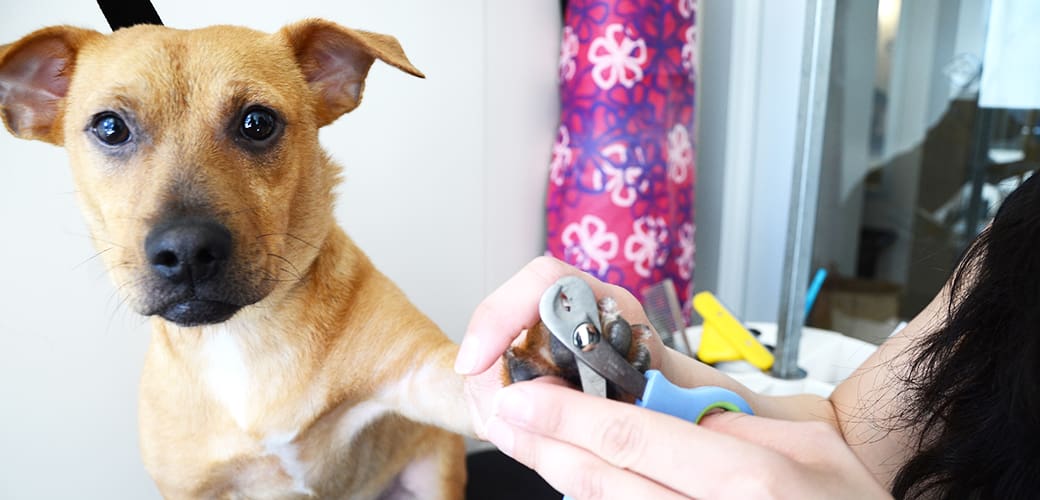
-
Nail clippers: Nail clippers are used to trim the dog’s nails. It’s important to use nail clippers that are designed for dogs and to avoid cutting the quick.
What are some effective techniques for beginners starting dog grooming at home?
For beginners starting dog grooming at home, it’s important to start slowly and to be patient with the dog.
Some effective techniques include:
-
Brushing the dog’s fur regularly to prevent tangles and mats.
-
Trimming the dog’s nails regularly to prevent them from becoming too long.
-
Bathing the dog with a gentle dog shampoo to keep the coat clean and healthy.
-
Using clippers and scissors to trim the dog’s fur to the desired length.


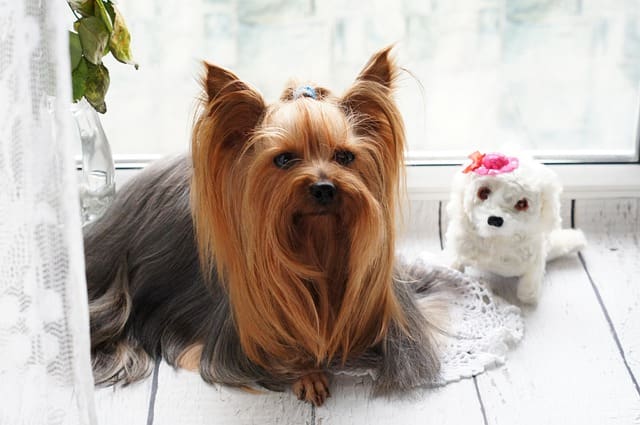
Can you describe a daily grooming routine to maintain a dog’s coat health?
To maintain a dog’s coat health, it’s important to establish a daily grooming routine. A typical daily grooming routine may include:
-
Brushing the dog’s fur to remove tangles and mats.
-
Checking the dog’s ears for dirt and debris.
-
Cleaning the dog’s teeth with a dog-specific toothbrush and toothpaste.
-
Checking the dog’s eyes for any signs of irritation or infection.
-
Wiping the dog’s paws to remove any dirt or debris.
What steps should be followed for a complete professional dog grooming session?
A complete professional dog grooming session typically includes the following steps:
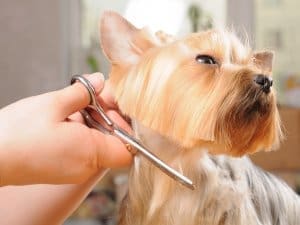

-
Brushing the dog’s fur to remove tangles and mats.
-
Bathing the dog with a gentle dog shampoo to clean the coat.
-
Drying the dog’s coat with a towel or blow dryer.
-
Trimming the dog’s nails to the desired length.
-
Using clippers and scissors to trim the dog’s fur to the desired length.



-
Cleaning the dog’s ears and teeth.
How can I groom my dog at home using clippers safely and effectively?
To groom your dog at home using clippers safely and effectively, it’s important to follow these steps:
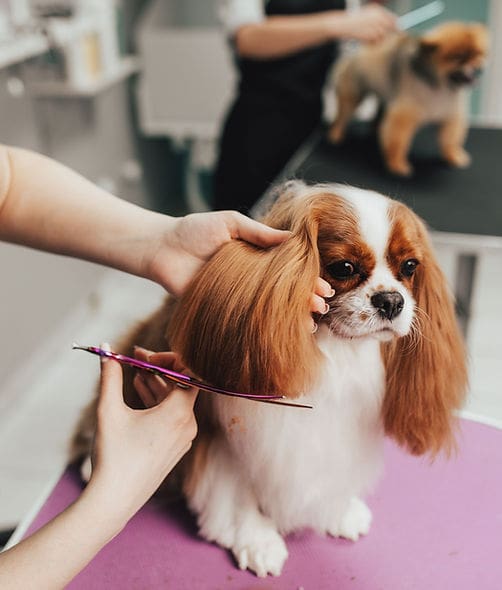

-
Choose the right clippers for your dog’s coat type.
-
Choose the right blade for the desired length of fur.
-
Start slowly and work in small sections.
-
Keep the clippers clean and well-maintained.
-
Use caution when grooming sensitive areas, such as around the ears and paws.
What is the proper etiquette for tipping a dog groomer after the service?
Tipping a dog groomer is a common practice. The amount of the tip can vary depending on the quality of the service and the location. In general, a tip of 15-20% of the service cost is appropriate.
It’s also important to consider the groomer’s level of experience and the difficulty of the job when deciding on the tip amount.
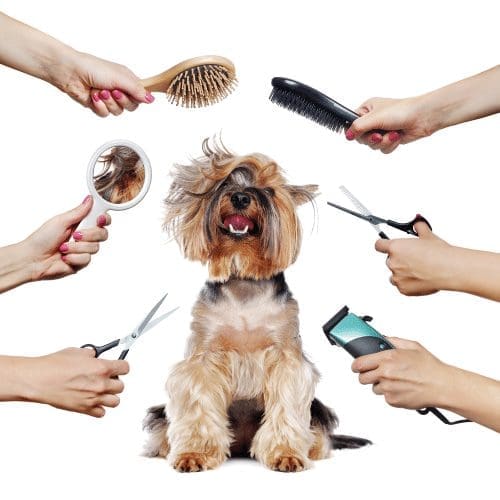





Hello, My Dog-Loving Friends! I’m Jason Brown, a social media marketer for Dog Training Schools and a writer at BestDogTraining.com. My world is all about the joy and wisdom our four-legged friends bring. I love the exchange of learning with dogs; it’s not just my job. It’s my way of life.
My journey began at Ohio State with a degree in journalism, fueling my passion for storytelling. This passion comes alive in every post and article I write, whether about the latest dog training techniques or heartwarming canine tales.
When I’m not immersed in the world of dogs, you can find me surfing. There’s a thrilling similarity between the unpredictability of the ocean and working with animals – both are endlessly fascinating. I’m also an aspiring poet, although I embrace the more humorous side of my attempts at verse.
Traveling is another passion of mine. My wife, kids, and I explore new places, always accompanied by our Basset Hound, Snoopy. He’s more than a pet; he’s integral to our family adventures.
Through my work, hobbies, and travels, I’ve discovered that life’s most fulfilling experiences come from sharing moments with family, friends, and a loyal dog. Follow me for stories and tips from a life enriched by dogs, the ocean, and family adventures! 🐕🌊👨👩👧👦
Dog Grooming
Best Training Tips for Working Dogs
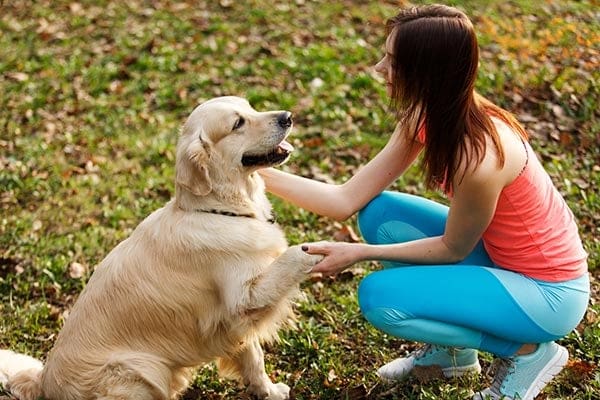

Working dogs are crucial in various fields, from law enforcement to search and rescue. But what does it take to train these hardworking canines?
In this article, we’ll explore the different types of working dogs, the importance of training, the benefits, and the basic commands every working dog should know. We’ll also discuss the best methods for training these dogs and the challenges that come with it.
Whether you’re a professional handler or simply a dog lover, this article will provide valuable insights into working dog training.
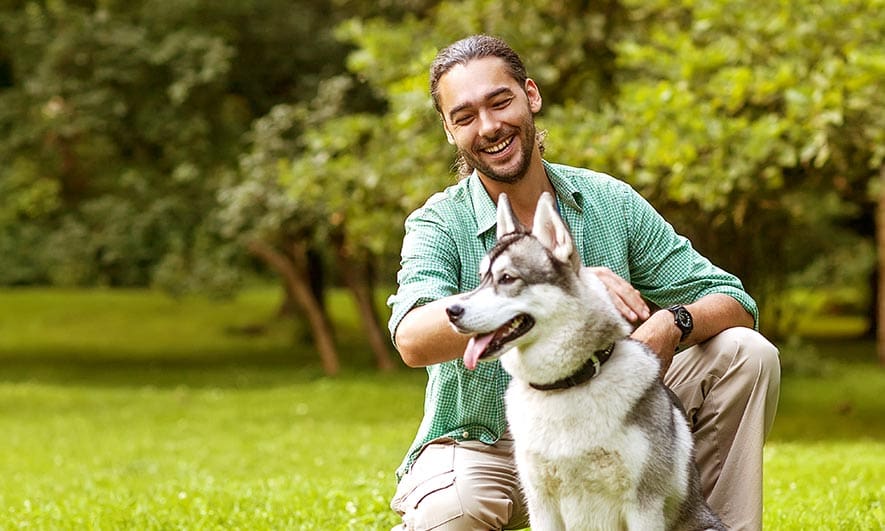

Key Takeaways:
What Are Working Dogs?
Working dogs are specially trained canines performing various tasks and duties to assist and support humans in various fields, ranging from security and protection to healthcare and research.
These skilled animals come in various breeds, each with unique traits and aptitudes tailored to specific roles. From German Shepherds excelling in police work to Labrador Retrievers aiding individuals with disabilities, the diversity in their functions is remarkable.
Training methods are key in harnessing their potential, encompassing obedience, scent detection, and agility training. Careful consideration of health and fitness is vital, ensuring that these remarkable canines are well-prepared for the demanding nature of their work. Their contributions across domains like search and rescue, therapy, and agriculture are invaluable, underscoring their significance in society.
What Are The Different Types Of Working Dogs?
Working dogs encompass a wide spectrum of specialized roles, including service, therapy, search and rescue, detection, and many others, each tailored to address specific human needs and societal challenges.
Service dogs are specially trained to assist individuals with disabilities. This includes guide dogs for the visually impaired and hearing dogs for those who are deaf or hard of hearing.
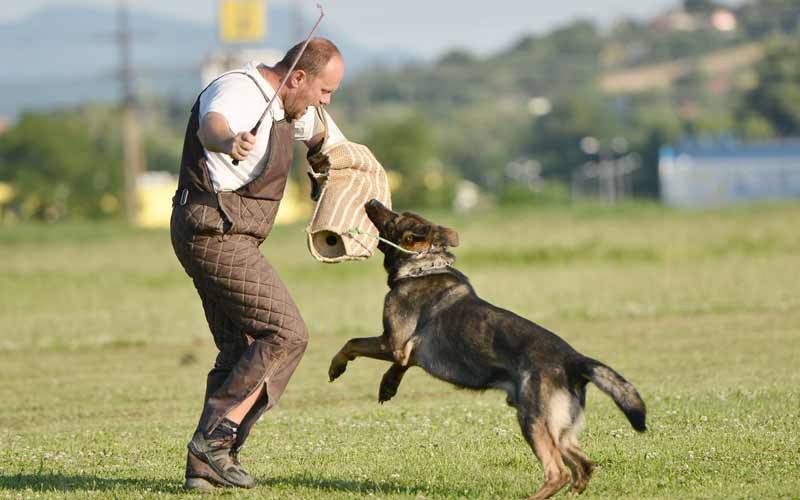

Therapy dogs provide comfort, affection, and support in various settings, such as hospitals, nursing homes, schools, and disaster areas. They offer emotional relief to people in distress.
Search and rescue dogs are trained to locate missing individuals in natural disasters or wilderness environments. They use their keen sense of smell and agility to save lives.
Why Is Training Important For Working Dogs?
Training holds immense significance for working dogs as it cultivates essential skills, behaviors, and obedience required to execute their designated tasks effectively and reliably.
Without training, working dogs could not perform tasks such as search and rescue, detection, herding, or support for individuals with disabilities.
Through carefully structured training programs, dogs can learn to respond to commands, adapt to various environments, and remain focused on their duties even in challenging situations.
What Are The Benefits Of Training For Working Dogs?
Training working dogs enhances their obedience and skills and fosters a deep, trusting relationship between the dogs and their handlers, leading to heightened efficiency and effectiveness in their designated tasks.
By actively engaging in training exercises, dogs learn to respond to commands promptly, ensuring that they perform their duties with precision and reliability.
Training allows these diligent animals to develop specialized skills, such as scent detection, search and rescue techniques, and herding capabilities, enabling them to fulfill their roles with utmost proficiency.
As the bond between a dog and its handler strengthens through consistent training, the level of trust and understanding deepens. This mutual trust results in improved communication and teamwork and cultivates a sense of loyalty and dedication in the dogs, making them even more alert, focused, and responsive to their handlers’ instructions and cues.
What Are The Basic Commands For Working Dogs?
Working dogs are trained to respond to fundamental commands, including ‘sit,’ ‘stay,’ ‘come,’ ‘heel,’ ‘leave it,’ and ‘down,’ each serving as crucial building blocks in their training and operational effectiveness.
These commands are essential for establishing control over the dogs and ensuring they can perform their duties effectively.
Obedience is a key aspect of their training, as it allows handlers to manage potential risks and guarantee reliable behavior in various situations.
Reinforcement of these commands through consistent training and positive rewards is vital for their continued responsiveness in their roles, whether it’s for search and rescue, police work, or aiding individuals with disabilities.
Sit
The sit command forms a foundational element in training working dogs, teaching them to assume a seated position on cue, showcasing their responsiveness and discipline.
This command is essential for obedience and safety, whether the dog is navigating busy city streets, participating in dog sports, or simply interacting with friends and family.
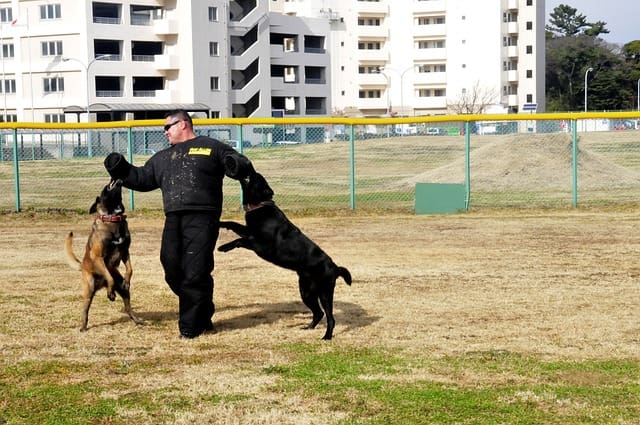

To execute the command, the trainer typically uses a treat or a toy to lure the dog into sitting, repeating the word ‘sit’ as the cue.
Once the dog complies, positive reinforcement, such as verbal praise or additional treats, is crucial to strengthen their understanding and compliance with the command.
Consistency and patience are key in reinforcing the ‘sit’ command, ensuring the dog learns to respond reliably in various environments and situations.
Stay
The stay command is pivotal in training working dogs, requiring them to maintain their position without movement until released, showcasing their discipline and attentiveness to their handler’s instructions.
It demonstrates the discipline and obedience essential for working dogs to perform their tasks effectively.
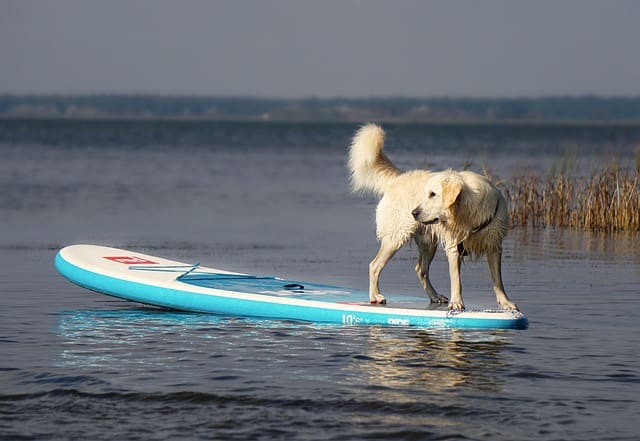

The ‘stay’ command ensures that the dog remains in place and teaches them self-control and patience. It is a skill that is particularly valuable in various working environments, such as search and rescue, police, and therapy dogs.
Positive reinforcement techniques are commonly utilized to train a dog in the ‘stay’ command. Handlers use treats, praise, and consistent practice to reinforce the desired behavior.
Gradually increasing the duration and distance of the ‘stay’ and introducing distractions help the dog to master this command. Making the training sessions fun and rewarding for the dog is essential, as well as building a positive association with the ‘stay’ command.
Come
The ‘come’ command is essential to working dog training, teaching them to respond promptly and return to their handler upon hearing the cue, highlighting their responsiveness and reliable obedience.
Training the ‘come’ command involves establishing a strong recall by using positive reinforcement and consistent practice sessions.
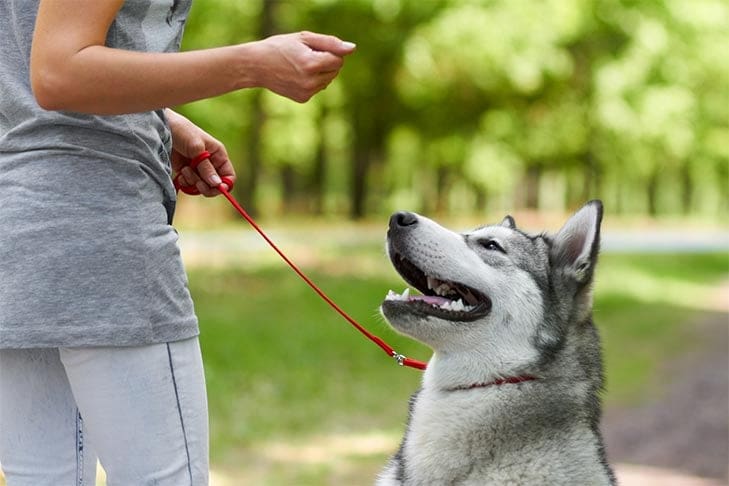

Handlers often start by using a long lead to gently guide the dog back as they say ‘come’, gradually reducing the distance and eventually transitioning to off-leash practice.
Creating a positive association with the command through rewards and praise is crucial, reinforcing the desired behavior.
Consistency and patience are key when implementing the ‘come’ command, which requires the dog’s full attention and understanding.
Incorporating real-life scenarios and distractions during training sessions helps solidify the recall response, ensuring the dog reliably comes when called.
Heel
The heel command is integral in the training of working dogs, requiring them to walk closely alongside their handler without pulling or straying, exhibiting their discipline and attentiveness during movement.
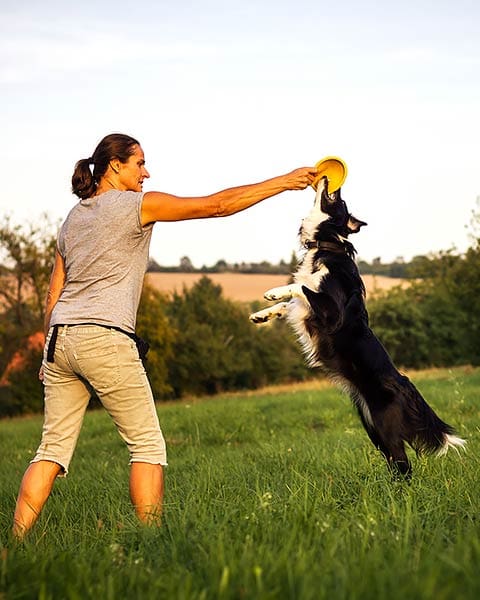

When a working dog masters the ‘heel’ command, it can effectively perform various tasks such as search and rescue, herding, protection, and assistance.
By teaching a dog to ‘heel’, the handler can maintain control in varied environments, ensuring safety and preventing the dog from getting distracted or wandering off in potentially hazardous situations. Reinforcement techniques, such as positive rewards and consistent training, are crucial in imprinting the ‘heel’ command in a working dog’s behavior, fostering a strong bond between the handler and the canine companion.
Leave It
The ‘leave it’ command is crucial for working dogs, instructing them to refrain from engaging with or consuming specific items or substances, showcasing their self-control and obedience to their handler’s directives.
During training, mastering the ‘leave it’ command involves a combination of discipline and positive reinforcement. Handlers use reward-based techniques, such as treats or verbal praise, to reinforce the desired behavior.
This command is particularly significant when working dogs encounter hazardous or distracting items, such as service dogs in public spaces. It fosters the important trait of self-control in these dogs, enabling them to focus on their duties without succumbing to temptations.
Down
The ‘down’ command is fundamental in training working dogs, requiring them to assume a lying down position, showcasing their responsiveness and ability to follow their handler’s cues.
When training a working dog to ‘down’, it’s essential to ensure consistent execution to reinforce their understanding of the command. This can involve verbal and physical cues to communicate the desired action.
Positive reinforcement, such as treats or verbal praise, is commonly used to encourage and reward the correct response. Through consistent practice and reinforcement, working dogs become adept at responding to the ‘down’ command in various environments and situations.
Incorporating this training into practical applications, such as search and rescue operations or police work, highlights the vital role of the ‘down’ command in maximizing a working dog’s capabilities.
How To Train Working Dogs?
Training working dogs requires a systematic approach that starts early, utilizes positive reinforcement, maintains consistency, and employs appropriate training methods tailored to their needs and roles.
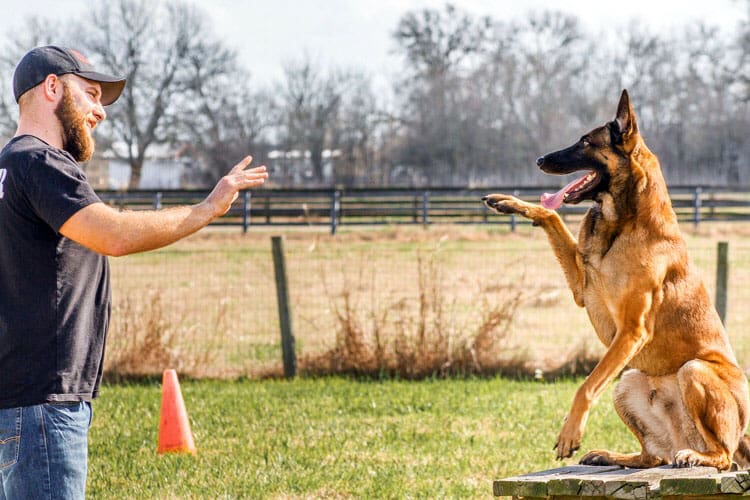

Early initiation is essential for working dogs as it sets the foundation for their roles and responsibilities. Positive reinforcement, such as treats, toys, and praise, helps to reinforce desired behaviors and strengthen the bond between the dog and the handler.
Consistency is key in establishing clear expectations and preventing confusion. Specialized training methods, like scent detection for search and rescue dogs or agility training for police K9 units, enable the dogs to develop the specific skills necessary for their tasks.
Start Training Early
Training at an early stage is pivotal for working dogs, as it establishes a strong foundation for learning, behavior shaping, and skill development, ensuring their readiness for their designated tasks.
Early training for working dogs is crucial for inculcating essential behaviors and honing the required skills. By training early, dogs can grasp commands, socialize, and develop critical problem-solving abilities more effectively. This early initiation also fosters a deeper connection between the handler and the dog, leading to better communication and understanding.
Working on mental stimulation and physical conditioning during early training can significantly impact the dog’s performance in their designated tasks. It sets the stage for a fulfilling and successful career in various working roles in service, protection, or search and rescue.
Use Positive Reinforcement
Employing positive reinforcement techniques in training working dogs fosters a conducive learning environment where desired behaviors are rewarded, shaping their responses and ensuring their sustained motivation and engagement.
This approach creates a positive association between the behavior and the reward, strengthening the likelihood of its repetition.
It also cultivates a strong bond between the trainer and the dog, fostering mutual trust and cooperation.
When working dogs experience the benefits of positive reinforcement, they demonstrate enhanced focus and willingness to carry out tasks, leading to improved performance and overall effectiveness in their designated roles.
Be Consistent
Consistency in training practices is paramount for working dogs, as it reinforces learned behaviors, establishes clear expectations, and ensures a harmonized approach across different training sessions and environments.
Consistency provides structure for the dogs and strengthens their understanding of commands and desired behavior.
The dogs learn to associate specific cues with expected responses by consistently reinforcing desired actions and behaviors. This approach helps to set clear expectations and boundaries, fostering a positive learning environment.
Use Appropriate Training Methods
Tailoring training methods to align with working dogs’ specific needs and roles is essential for maximizing their learning potential, behavioral development, and operational readiness in their designated tasks.
Understanding each working dog’s unique abilities and characteristics is crucial in customizing their training approach. By recognizing their strengths and weaknesses, trainers can adapt their methods to address individual behavioral patterns and learning styles.
This personalized approach greatly enhances the dog’s ability to grasp and execute complex tasks precisely and efficiently. Tailored training methods also contribute to working dogs’ well-being and mental stimulation, fostering a positive and rewarding training experience. This individualized attention ensures that the dogs are not only prepared for their specific roles, but also nurtured in a way that supports their overall development and happiness.
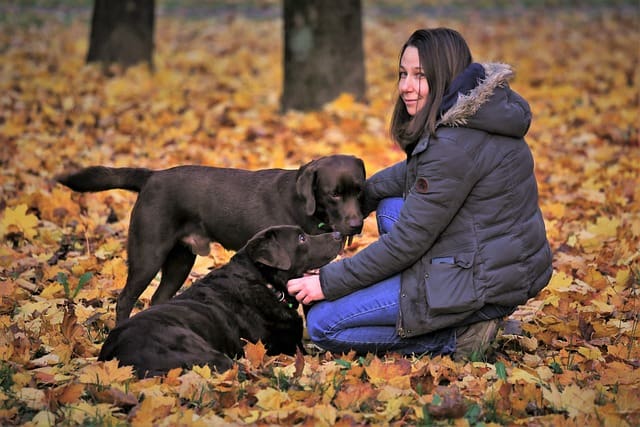

What Are The Challenges Of Training Working Dogs?
Training working dogs presents various challenges, including managing their high energy levels, mitigating distractions, addressing breed-specific needs, and accommodating potential physical limitations to ensure effective training outcomes.
Breeds such as Border Collies and Australian Shepherds are known for their high energy levels, making it essential to provide ample physical and mental stimulation.
Proper management of distractions during training sessions, like using controlled environments and gradual exposure, is crucial for fostering focus. Understanding breed-specific traits and behaviors, such as the strong herding instincts in certain breeds, allows trainers to tailor their approaches effectively.
High Energy Levels
Managing the high energy levels of working dogs during training poses a significant challenge, requiring strategies to channel their energy positively and maintain their focus and responsiveness.
When working with high-energy dogs, redirecting their energy toward tasks that require focus and concentration can be highly beneficial. Incorporating activities such as agility courses, obedience training, and interactive play can help them burn off excess energy constructively.
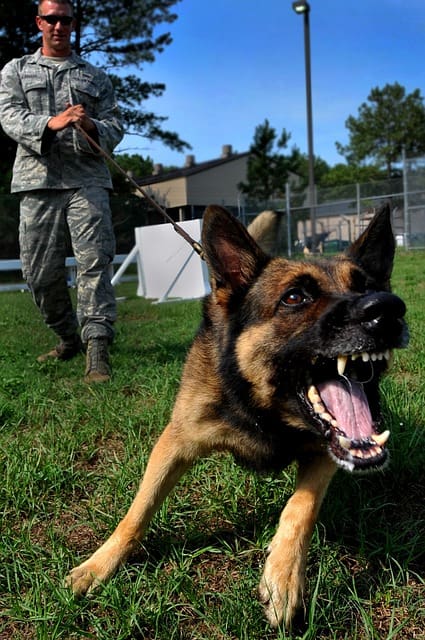

Using stimulating toys and challenging exercises during training sessions can help maintain their focus and prevent boredom.
Distractions
Mitigating distractions during training is a critical challenge for working dogs, necessitating techniques to enhance their focus, minimize external disruptions, and reinforce their concentration on assigned tasks.
Distractions like noises, smells, and unfamiliar surroundings can detract working dogs from their training objectives. To address this, trainers utilize focus enhancement strategies, including desensitization to environmental stimuli, systematic exposure to distractions, and positive reinforcement for maintaining attention.
Moreover, disruption minimization involves creating controlled training environments, using consistent routines, and gradually introducing new elements to avoid overwhelming the dogs. Concentration reinforcement methods, like mental stimulation exercises and establishing clear communication cues, further promote sustained attention during tasks.
Different Breeds Have Different Needs
Addressing the diverse needs of different dog breeds presents a notable challenge in training, requiring customized approaches to accommodate their distinct characteristics, behaviors, and learning styles.
Each breed possesses unique traits and tendencies, necessitating tailored training methods.
For example, highly energetic breeds such as Border Collies may require more physical activity and mental stimulation, while independent breeds like Siberian Huskies may need gentle persistence and patience.
Sensitive breeds such as Shih Tzus might respond better to positive reinforcement, whereas working breeds like German Shepherds thrive in tasks and obedience training.
Being adaptable in the training approach is crucial to address the individual needs of various breeds effectively.
Physical Limitations
Accommodating the potential physical limitations of working dogs during training poses a significant challenge, necessitating specialized techniques and adaptations to ensure their comfort, safety, and training efficacy.
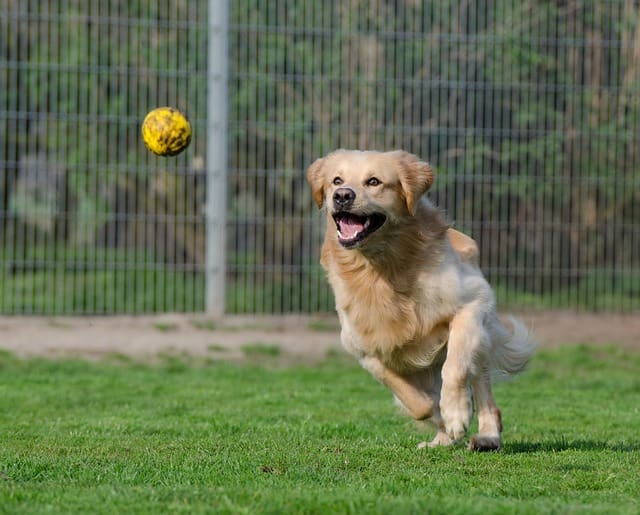

Understanding individual dogs’ unique needs and abilities is crucial in addressing their physical limitations. Tailoring training regimens to account for disabilities or physical constraints requires a thoughtful approach, often involving customized equipment and training aids.
Training environments must be carefully designed to minimize potential risks and consider the impact of the dog’s limitations on their performance. It’s also essential to continuously monitor and adjust training techniques to account for any changes in the dog’s physical condition over time.
Frequently Asked Questions
What is training for working dogs?
Training for working dogs is a specialized program designed to teach dogs specific tasks and skills that will enable them to perform duties in various fields, such as search and rescue, detection, and protection.
What are the benefits of training for working dogs?
Training for working dogs can provide a wide range of benefits, including improved obedience, increased physical and mental stimulation, and the development of specialized skills that can benefit both the dog and their human partners in various working environments.
What types of dogs are suitable for training for working dogs?
Many breeds and mixes can excel in training for working dogs, but some of the most commonly trained include German Shepherds, Labrador Retrievers, Belgian Malinois, and Golden Retrievers. Breeds with a strong desire to work and high levels of energy are typically the best candidates.
How long does training for working dogs typically take?
Training for working dogs can vary in length depending on the specific skills and tasks being taught. Basic obedience training can take a few weeks, while more advanced training for specific tasks and situations can take several months or even up to a year.
What does the training process for working dogs involve?
The training process for working dogs typically involves a combination of positive reinforcement, repetition, and gradual advancement in difficulty. Dogs are taught to focus on their handler, follow commands, and perform tasks with consistency and reliability.
Can any dog become a working dog through training?
While many dogs can benefit from training and excel in various tasks, not all dogs have the temperament, physical ability, or drive to become working dogs. It’s important to carefully assess a dog’s personality and capabilities before committing to training for working dogs.




Hello, My Dog-Loving Friends! I’m Jason Brown, a social media marketer for Dog Training Schools and a writer at BestDogTraining.com. My world is all about the joy and wisdom our four-legged friends bring. I love the exchange of learning with dogs; it’s not just my job. It’s my way of life.
My journey began at Ohio State with a degree in journalism, fueling my passion for storytelling. This passion comes alive in every post and article I write, whether about the latest dog training techniques or heartwarming canine tales.
When I’m not immersed in the world of dogs, you can find me surfing. There’s a thrilling similarity between the unpredictability of the ocean and working with animals – both are endlessly fascinating. I’m also an aspiring poet, although I embrace the more humorous side of my attempts at verse.
Traveling is another passion of mine. My wife, kids, and I explore new places, always accompanied by our Basset Hound, Snoopy. He’s more than a pet; he’s integral to our family adventures.
Through my work, hobbies, and travels, I’ve discovered that life’s most fulfilling experiences come from sharing moments with family, friends, and a loyal dog. Follow me for stories and tips from a life enriched by dogs, the ocean, and family adventures! 🐕🌊👨👩👧👦
Dog Grooming
What Sets a Dog Grooming Apron With Pockets Apart?
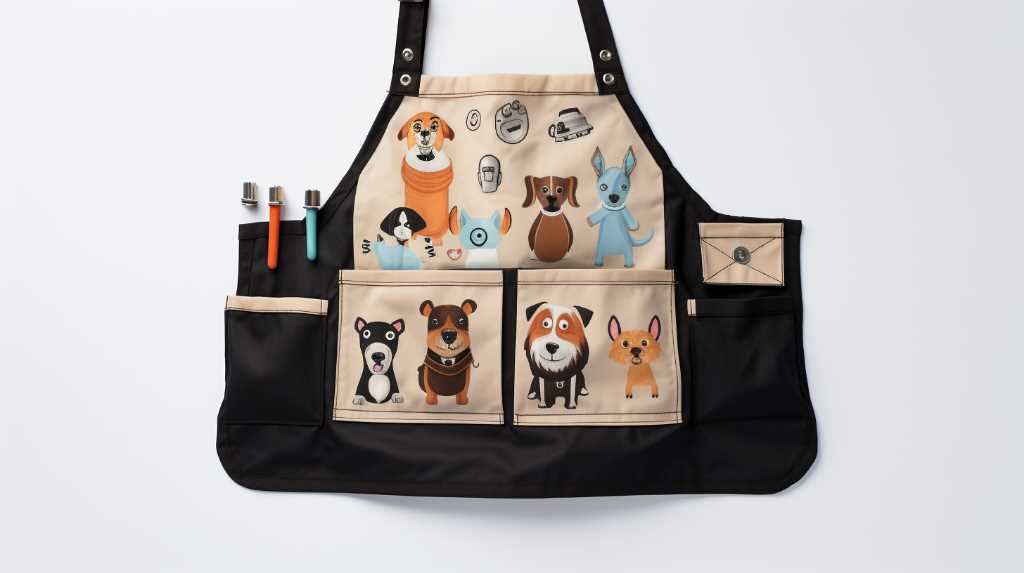

For dog groomers seeking a sense of freedom and practicality in their work, the choice of grooming apron holds significant importance. What sets a dog grooming apron with pockets apart lies in its ability to provide convenience and efficiency.
The inclusion of pockets offers the freedom to keep essential tools, treats, and accessories within reach, eliminating the need for constant back-and-forth movements. Furthermore, the durability and material of the apron are critical factors that ensure longevity and ease of maintenance.
Comfort and functionality are also paramount, allowing groomers to move freely and attend to their furry clients without hindrance. Professional groomers understand the value of a well-designed apron, making it an indispensable tool for their daily grooming routines.
Importance of Pockets in Grooming Aprons
The importance of pockets in grooming aprons lies in their ability to conveniently hold essential tools and supplies for efficient grooming procedures. Pockets organization is crucial for groomers who require quick access to items such as brushes, combs, scissors, and nail clippers.
Without proper apron storage solutions, groomers may find themselves fumbling for tools or having to carry them separately, leading to a less streamlined and more time-consuming grooming process. A well-designed grooming apron with strategically placed pockets ensures that everything a groomer needs is within easy reach, allowing for a smoother workflow and a more enjoyable grooming experience.
This level of organization and accessibility is essential for professionals who value freedom of movement and efficiency in their work.
Material and Durability: A Groomer’s Ally
A high-quality dog grooming apron with pockets is crafted from durable and water-resistant material, providing groomers with a reliable ally that withstands the rigors of daily use. The material selection is crucial in ensuring the longevity and functionality of the apron, making maintenance easier and more effective.
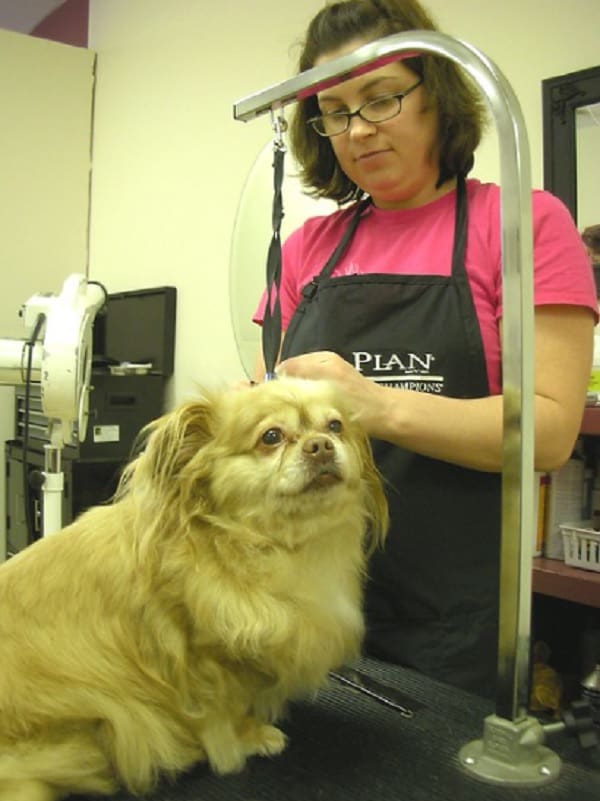

The following factors set such aprons apart:
- Water-Resistant Material: The apron’s ability to repel water ensures that grooming fluids and water don’t seep through, keeping the groomer dry and comfortable.
- Durable Construction: The use of tough, resilient materials ensures that the apron can withstand the demands of a busy grooming environment without tearing or wearing out quickly.
- Easy Maintenance: The selected material is easy to clean, allowing for quick and efficient apron maintenance, saving time and effort for the groomer.
Design and Comfort: Prioritizing the Groomer’s Need
Crafting a dog grooming apron with pockets that prioritize the groomer’s need for design and comfort requires attention to detail and a deep understanding of the demands of the grooming environment.
Design innovation plays a pivotal role in creating aprons that offer both style and functionality. The incorporation of ergonomic fit is essential in ensuring that groomers can move freely and comfortably during long hours of work.
The strategic placement of pockets and compartments should not only enhance the apron’s aesthetic appeal but also provide practicality, ensuring that essential tools are within easy reach. A well-designed apron should distribute weight evenly to prevent strain and fatigue.
The choice of materials and the breathability of the fabric are also crucial factors in enhancing overall comfort. Ultimately, a thoughtfully designed grooming apron can significantly elevate a groomer’s experience, allowing for greater freedom of movement and convenience.
Professional Groomers’ Insights on Apron Utility
Professional groomers emphasize the practicality and functionality of apron pockets in their daily grooming routines. From a groomer’s perspective, apron organization plays a crucial role in enhancing efficiency and productivity. Here are insights from professional groomers on apron utility:
- Tool Accessibility: Groomers rely on apron pockets to keep essential tools such as scissors, brushes, and combs within easy reach, allowing for seamless grooming without interruptions.
- Treat Storage: Apron pockets provide a convenient space for storing treats, enabling groomers to reward good behavior during grooming sessions without having to step away to retrieve treats.
- Mobile Phone Holder: Many groomers appreciate aprons with pockets designed to securely hold their mobile phones, ensuring they can stay connected and accessible while working hands-free.
These insights underscore the significance of well-organized apron pockets in the grooming profession.
Style Meets Function: Choosing Your Apron
When choosing a dog grooming apron with pockets, it is essential to consider both style and functionality to ensure a professional and efficient grooming experience.
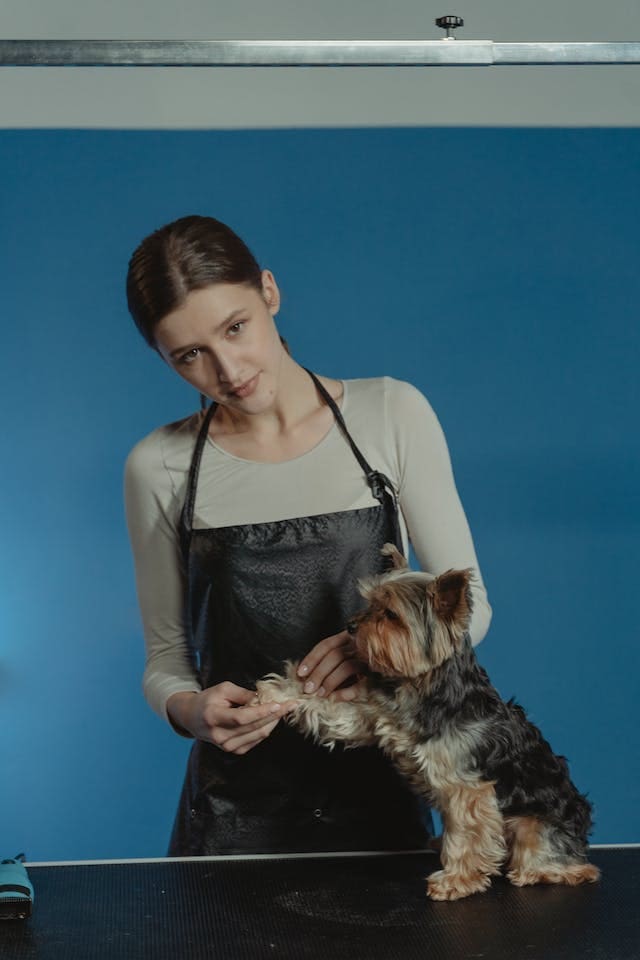

The style of the apron should not only reflect your personal taste but also exude professionalism. Opt for aprons that come in various colors and designs, allowing you to express your individuality while maintaining a polished look.
Practicality and comfort are equally important. Look for aprons made from durable, waterproof materials that are easy to clean, ensuring they can withstand the demands of the grooming environment. Additionally, adjustable neck and waist straps provide a comfortable fit for extended wear.
Frequently Asked Questions
Can a Grooming Apron With Pockets Help Prevent Hair and Debris From Getting on My Clothes?
A grooming apron with pockets provides effective prevention of hair and debris from soiling clothes. It offers storage solutions for tools and accessories, aiding in organization and efficiency during grooming sessions.
Are There Specific Types of Tools or Products That Can Be Easily Stored in the Pockets of a Grooming Apron?
Storage solutions in a grooming apron enable easy access to essential grooming tools and products. These pockets provide apron organization, ensuring quick retrieval of items while maintaining cleanliness. Additionally, they offer added hair protection, keeping debris away from clothing and promoting a cleaner grooming environment.
How Do the Pockets on a Grooming Apron Help With Organization During the Grooming Process?
In the grooming process, the pockets on a grooming apron enhance organization efficiency by providing convenient storage for essential tools. The apron’s design ensures quick access to grooming tools, promoting a seamless and focused grooming experience.
Are There Any Special Features or Considerations to Keep in Mind When Choosing a Grooming Apron With Pockets?
When choosing a grooming apron with pockets, consider the durability and comfort it offers. Look for aprons made from water-resistant, easy-to-clean materials. Sizing is crucial for a good fit, ensuring ease of movement during grooming sessions.
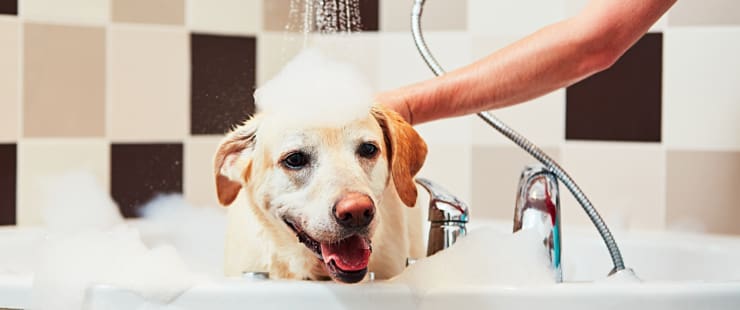

What Are Some Creative Ways That Groomers Utilize the Pockets on Their Aprons During a Grooming Session?
Apron organization and creative tools play a crucial role in grooming efficiency. Groomers utilize apron pockets for quick access to scissors, brushes, and treats, enhancing their ability to multitask and provide smooth, uninterrupted grooming sessions for pets.


Hello, My Dog-Loving Friends! I’m Jason Brown, a social media marketer for Dog Training Schools and a writer at BestDogTraining.com. My world is all about the joy and wisdom our four-legged friends bring. I love the exchange of learning with dogs; it’s not just my job. It’s my way of life.
My journey began at Ohio State with a degree in journalism, fueling my passion for storytelling. This passion comes alive in every post and article I write, whether about the latest dog training techniques or heartwarming canine tales.
When I’m not immersed in the world of dogs, you can find me surfing. There’s a thrilling similarity between the unpredictability of the ocean and working with animals – both are endlessly fascinating. I’m also an aspiring poet, although I embrace the more humorous side of my attempts at verse.
Traveling is another passion of mine. My wife, kids, and I explore new places, always accompanied by our Basset Hound, Snoopy. He’s more than a pet; he’s integral to our family adventures.
Through my work, hobbies, and travels, I’ve discovered that life’s most fulfilling experiences come from sharing moments with family, friends, and a loyal dog. Follow me for stories and tips from a life enriched by dogs, the ocean, and family adventures! 🐕🌊👨👩👧👦
-



 Dog Grooming1 year ago
Dog Grooming1 year ago7 Essential Tips for Dog Grooming: From Coat Length to Cooling Down Period
-



 Dog Breeds1 year ago
Dog Breeds1 year agoIs There a Real Connection Between Dog Breeds and Their Inherent Aggressiveness?
-

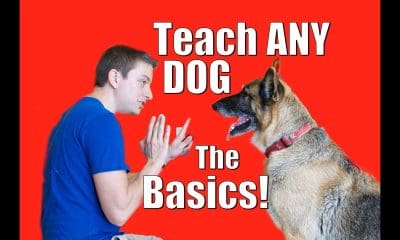

 Videos1 year ago
Videos1 year agoDog Training 101: How to Train ANY DOG the Basics
-



 Dog Adoption1 year ago
Dog Adoption1 year agoWhy Should You Consider Bringing Home a Senior Dog?
-



 Dog Adoption1 year ago
Dog Adoption1 year agoWhat Are the Considerations Before Adopting a Special Needs Dog?
-

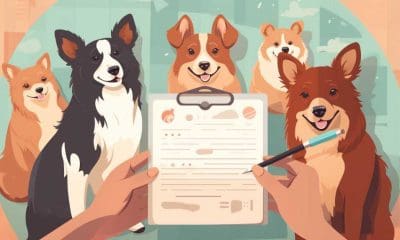

 Dog Adoption1 year ago
Dog Adoption1 year agoWhat Crucial Elements Should I Consider in a Dog Adoption Contract?
-

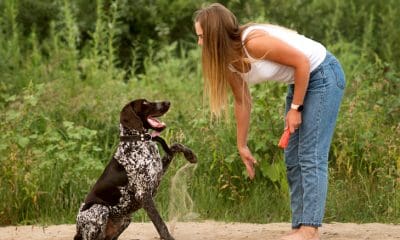

 Dog Training1 year ago
Dog Training1 year agoUnleash Your Pooch’s Potential: Mastering the Art of Fetch
-

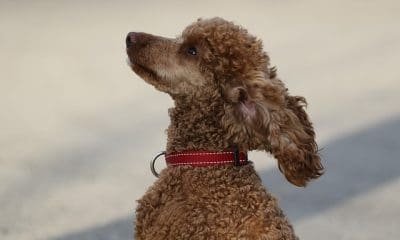

 Dog Adoption1 year ago
Dog Adoption1 year agoMaking Your Home a Haven for Your New Dog}












